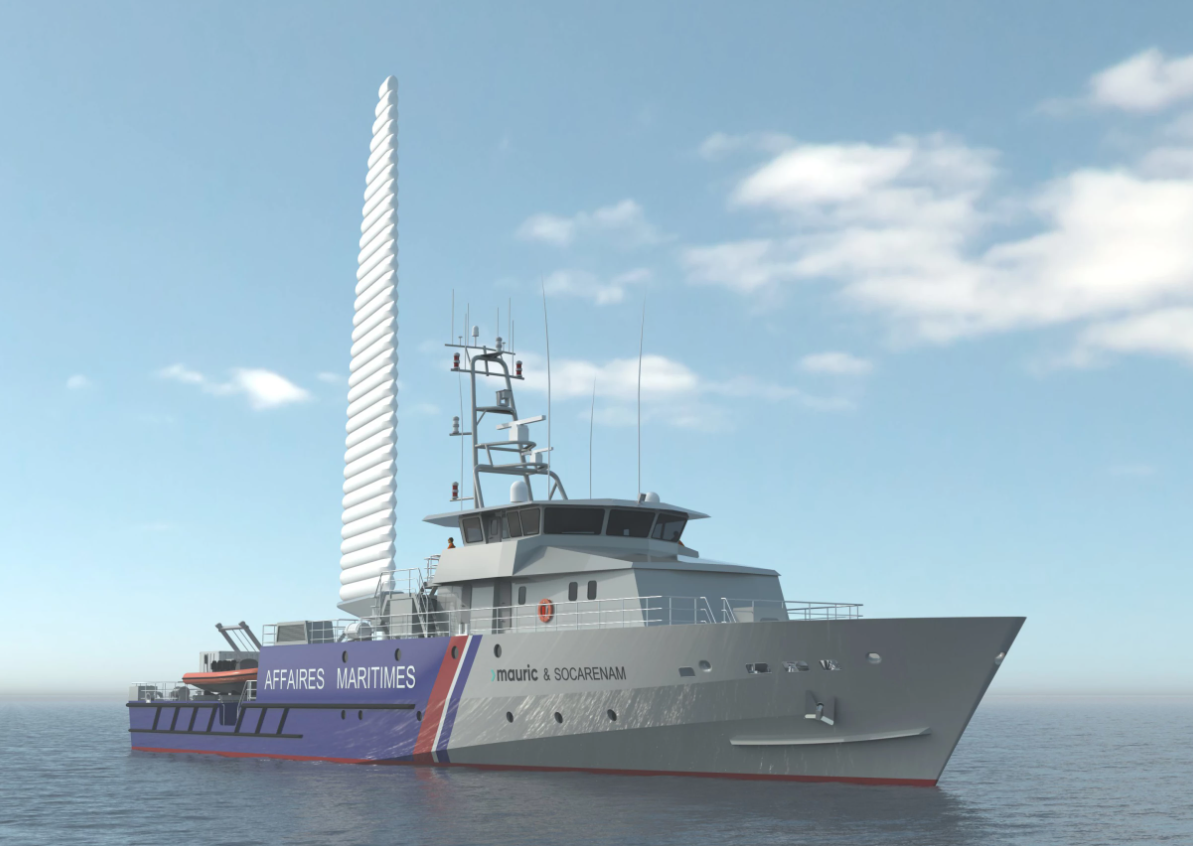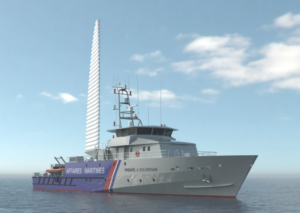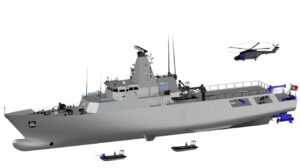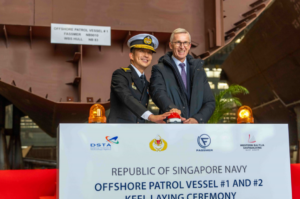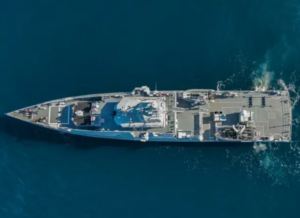Contract signed for construction of ‘innovative’ offshore patrol vessel with wind-assisted propulsion
Following a public tender, Socarenam-Mauric consortium has been awarded a contract by the Directorate General for Maritime Affairs, Fisheries, and Aquaculture (DGAMPA) to design and build an “innovative” offshore patrol vessel.
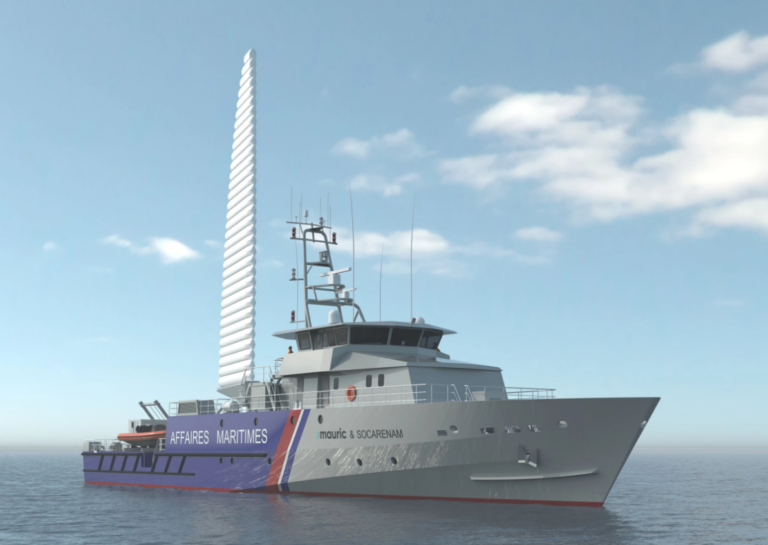
The contract was announced on January 10, 2024, in the presence of the French Minister of Ecological Transition, Biodiversity, Forests, Sea, and Fisheries Agnès Pannier-Runacher.
This order is part of a dual strategic approach: modernizing the fleet dedicated to the control and surveillance system (DCS) and the commitment towards the environmental footprint of DGAMPA vessels.
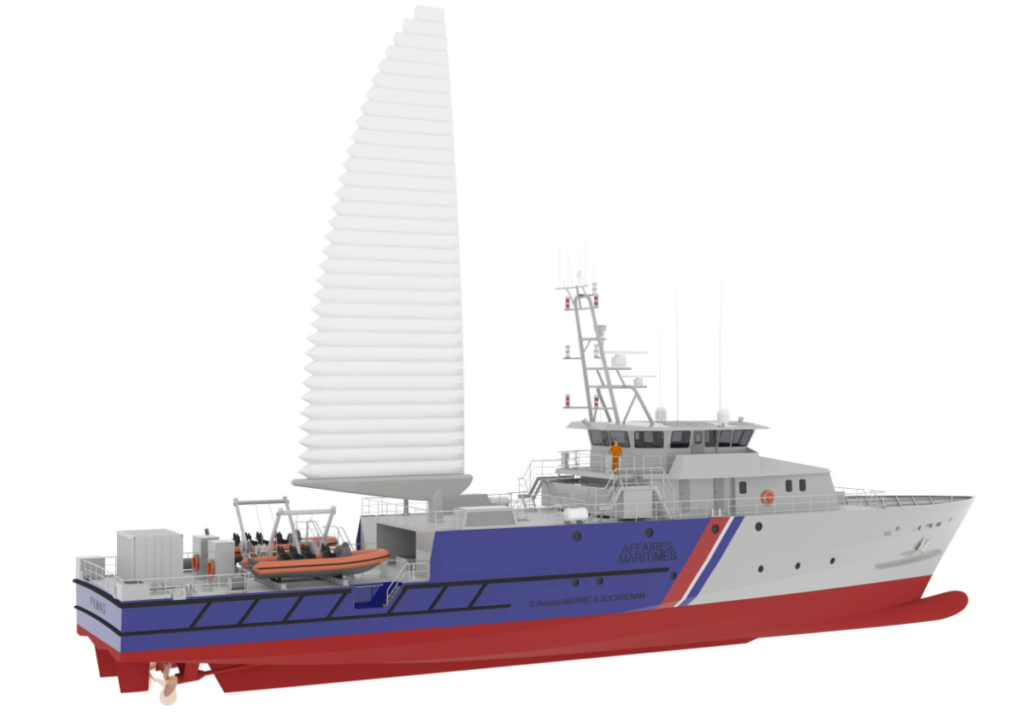
With a length of 54 meters, this offshore patrol vessel is designed for extended 12-day missions with a crew of 20 persons. It is equipped with two launch and recovery systems for 6.50-meter fast semi-rigid inflatable boats capable of intercepting at a speed of up to 35 knots to endure its offshore missions.
The main missions will include:
- Protection of national interests;
- Maritime fisheries surveillance and control;
- Environmental regulations compliance;
- Pollution and navigation monitoring;
- Assistance to persons,
- Public service missions and representation of French Maritime Affairs Administration.
The new patrol vessel will be equipped with an advanced wind-assisted propulsion system, designed to “drastically reduce” fuel consumption and lower atmospheric emissions, according to the companies. This technology, along with its diesel-electric hybrid propulsion and IMO Tier III compliant engines, is expected to set a new standard for environmental sustainability in marine operations.
In addition to its wind-assisted and advanced hybrid propulsion, the patrol ship incorporates several other technological innovations: a hull optimized through computational fluid dynamics, enhanced insulation with optimized energy management, photovoltaic panels, and an active trim control system.
Its propulsion configuration allows a maximum speed of 17 knots and a range exceeding 3,600 nautical miles at a cruising speed of 12 knots.
Construction will be carried out entirely at Socarenam’s shipyard in Boulogne-Sur-Mer, with delivery scheduled for the second half of 2027.
Read more
- CNIM to build 14 amphibious landing craft for French Navy
- French DGA places order for first next-gen patrol boat

